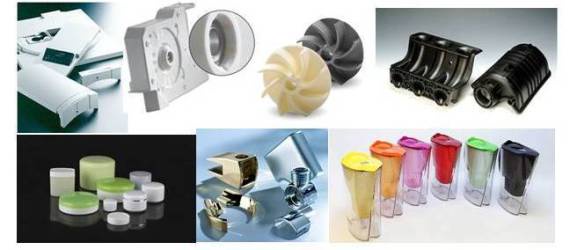Custom plastic molding plays a vital role in numerous industries by enabling the production of unique and innovative products. However, the significance of design in custom plastic molding is often underestimated.
Ahead in this article, we will delve into the crucial role of design in custom plastic molding and how it impacts product quality, functionality, and market success.
Understanding Custom Plastic Molding
Custom plastic molding refers to the process of creating plastic parts tailored to specific requirements and designs. It is a versatile manufacturing technique with applications in many industries.
Nowadays, custom plastic molding is widely used in the automotive, aerospace, medical, and consumer goods industries. However, achieving precise and accurate results is paramount in custom plastic molding, as it directly affects the quality and functionality of the final product.
The Role of Design in Custom Plastic Molding
Design plays a pivotal role in custom plastic molding, influencing various aspects of the manufacturing process. Let's explore three key elements of design in custom plastic molding:
1. Part and Mold Design: Effective part and mold design are essential for successful custom plastic molding. The design of the part determines its shape, size, and features, while the mold design dictates how the plastic material will flow and solidify. Factors such as wall thickness, draft angles, and undercuts need careful consideration to ensure the manufacturability and functionality of the final product.
2. Material Selection: Choosing the right plastic material is crucial for custom plastic molding. Different materials exhibit unique properties, such as strength, flexibility, and heat resistance. Therefore, designers should consider factors such as intended use, environmental conditions, and cost during material selection.
3. Mold Flow Analysis: It is a simulation technique that predicts and optimizes the flow of molten plastic material within the mold. By analyzing factors such as injection pressure, temperature, and cooling time, designers can identify potential issues and make necessary adjustments to optimize the molding process. It ensures the production of high-quality parts with minimal defects.
Design for Manufacturability
Design for Manufacturability, or DFM, is a concept that emphasizes designing products with the manufacturing process in mind. By considering manufacturability during the design phase, significant benefits can be achieved:
1. Cost-effectiveness: DFM principles help identify design elements that may increase manufacturing costs. By eliminating unnecessary complexity and optimizing designs for efficient production, costs can be reduced significantly.
2. Enhanced Product Quality: Designing with manufacturability in mind allows for better control over critical factors such as part geometry, tolerances, and material selection. It leads to improved product quality and reliability.
3. Faster Time-to-market: DFM streamlines the manufacturing process by reducing the need for rework or design iterations. By avoiding potential production delays, products can reach the market faster, giving businesses a competitive edge.
Design Challenges and Solutions
Custom plastic molding presents various design challenges that need to be addressed effectively. Some common challenges include:
1. Wall Thickness and Uniformity: Maintaining consistent wall thickness throughout the part is crucial for achieving structural integrity and minimizing defects. Designers must ensure proper wall thickness ratios and transitions to avoid issues such as warping or sink marks.
2. Draft Angles and Undercuts: Draft angles facilitate the smooth removal of the part from the mold. However, complex designs with undercuts may pose challenges. Implementing appropriate draft angles and employing techniques like side actions or lifters can overcome these challenges.
3. Gate and Runner Design: Proper gate and runner design are critical for achieving optimal plastic flow and minimizing defects. Designers must consider factors such as gate location, size, and runner layout to ensure efficient filling and uniform cooling.
To overcome these challenges, close collaboration between designers and molders is vital. By leveraging their expertise, designers can incorporate design elements to enhance moldability and manufacturability.
Impact of Design on Market Success
The design significantly influences product differentiation and market success. Consumers are drawn to products that not only perform well but also possess appealing aesthetics and functional design. Investing in thoughtful design is crucial for businesses to create products that stand out in the market and attract a larger customer base.
Final Thoughts
Design plays a pivotal role in custom plastic molding, as it impacts product quality, functionality, and market success. Businesses can create high-quality, cost-effective products that meet customer expectations by considering key design elements, embracing DFM principles, and addressing design challenges effectively.
Collaboration between designers and a reliable mold-making company like China Casting Orlando is essential for successful custom plastic molding projects. Prioritizing design considerations and seeking expert advice can lead to superior products and a competitive edge in the industry.


No comments yet